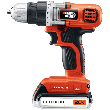Organizing Your Emergency Response Kit
Written by Lee Wyatt (last updated May 17, 2022)
Who hasn't heard about some tragedy on the evening news lately? Does anyone really want to be faced with the possibility that they could find themselves without resources or a plan in the event of an emergency? Instead of sitting around and saying that it will never happen to you, why not take a little time and prepare, just incase? You will be surprised at how easy it is to organize your emergency response kit.
- Identify potential threats. The very first task for organizing your emergency response kit is to begin identifying potential emergencies or threats. This step, often called a threat assessment, will allow you to begin formulating some plans of actions, and give you a list of items that you may need. You do need to be careful though that you don't get carried away.
- Prepare for the most likely. It would be exceptionally easy to sit down and think that you would like to prepare for every threat imaginable. However, this is impossible. Instead you should focus your energies on the ones that are most likely. For example spend time thinking about, and preparing for a house fire, rather than a zombie invasion. Be realistic, and prepare for the most likely emergencies.
- Develop a plan. Part of a emergency response kit is a plan of what you will need to do in the event of an emergency. For a house fire, who will get the kids out? Will you worry about the pets? What about your important papers? Do you have any blankets that you can grab quickly? What about emergency food? Think about the "what if's" and plan accordingly.
- Practice your plan. When you think that you have a plan developed, practice it. This will help you know what to do incase of any real emergency, and help you identify any potential holes in your plan. This is why you see the military, police, and emergency responders always training, so that they know by "instinct" what to do when an emergency happens.
- Maintain your kit. While you are practicing your plan, keep an eye out for any items that you may find that you need, and add them to your kit later on. If your emergency kit will have some kind of food, water, or perishable (such as batteries) be sure that you are rotating those items out periodically. You want your kit to be as ready to face an emergency as possible.
Author Bio
Lee Wyatt
Contributor of numerous Tips.Net articles, Lee Wyatt is quickly becoming a regular "Jack of all trades." He is currently an independent contractor specializing in writing and editing. Contact him today for all of your writing and editing needs! Click here to contact. Learn more about Lee...
No-Bake Chocolate Cookies
Whether it's due to the rising temperatures of spring and summer or you don't like how hot it can get when you bake, ...
Discover More
Installing a Water Efficient Showerhead
Whether you are looking to save money on your water bill, or are more interested in becoming more efficient in your water ...
Discover More
Dealing with Bishop's Weed
Depending on who you ask, Bishop's Weed can either be a great ground cover, or one of the most annoying and tenacious ...
Discover More
Storage Cost
The moving van stores your beloved household and furniture items while on route. You don't pay only for transport, you ...
Discover More
Fantastic Yard Sale Ideas
You have de-cluttered your home, and are wondering what should you do with all that excess stuff? Don't put it into ...
Discover More
Making Goals a Reality
One of the best ways to become more organized in life is to make goals. However, just because you make some goals doesn't ...
Discover More

Comments